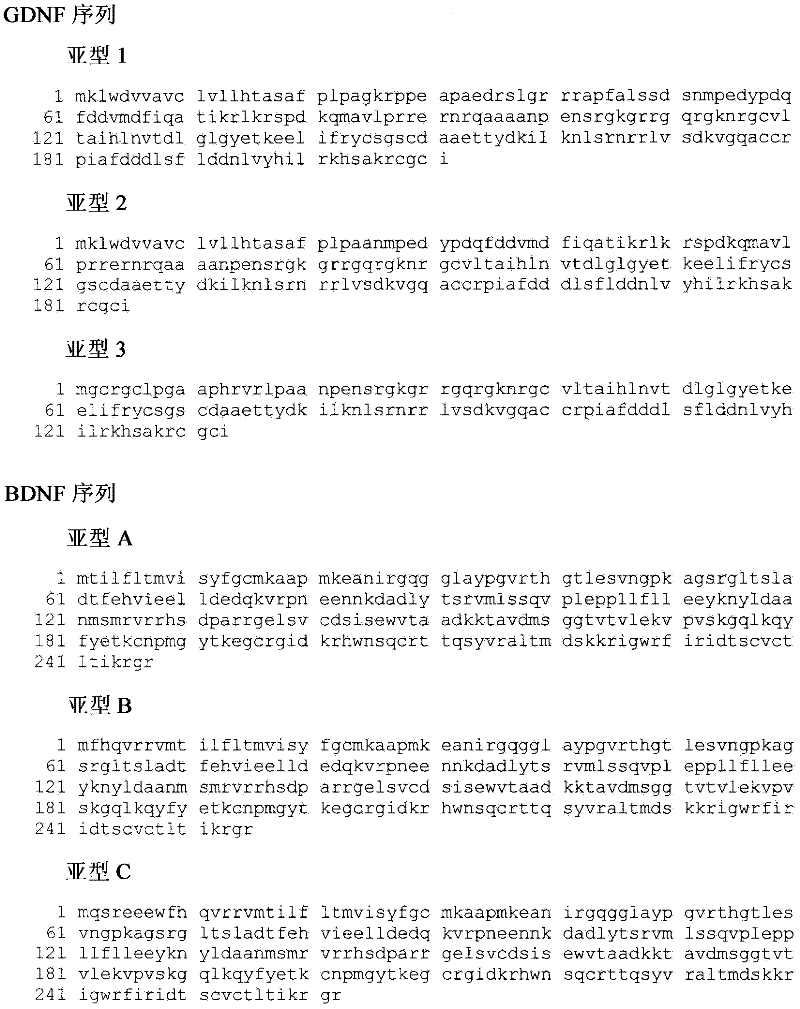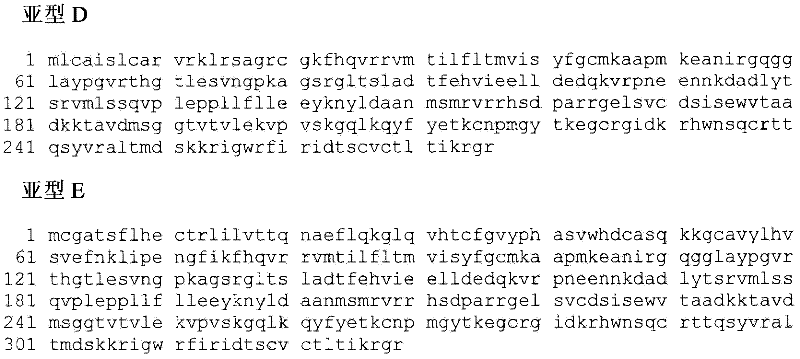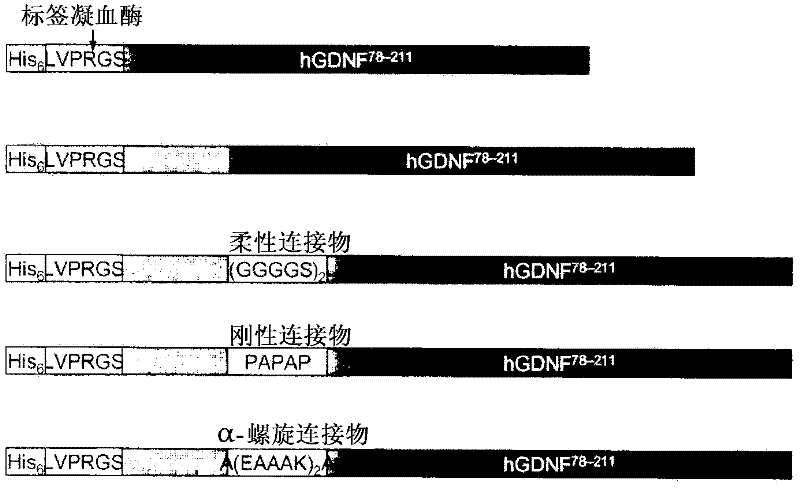Fusion proteins for delivery of gdnf and bdnf to the central nervous system
A compound, A-X-B technology, applied in neuregulin, nervous system diseases, DNA/RNA fragments, etc., can solve cumbersome and difficult problems
- Summary
- Abstract
- Description
- Claims
- Application Information
AI Technical Summary
Problems solved by technology
Method used
Image
Examples
Embodiment 1
[0156] Angiopep-2 / GDNF construct
[0157] Generate sequences including Angiopep-2 and hGDNF (hGDNF 78-211 ) construct. These constructs include the N-terminus (His) 6 Tag, thrombin cleavage site, Angiopep-2 sequence and GDNF sequence. A control peptide was also generated without the Angiopep-2 sequence ( figure 2 ). The amino acid sequences of the N-terminal portions of these sequences are shown in image 3 . The strategy used to clone these constructs is described in Figure 4-7 middle. Similar strategies can be used to generate BDNF constructs. The sequences of these constructs are shown in Figure 8-12 middle. A schematic showing the Angiopep-2-GDNF compound bound to GFRα1 is shown in Figure 13 middle.
[0158] Generate additional GDNF constructs such as Figure 14 shown in. These include hGDNF in which Angiopep-2 is attached to its N-terminus 78-211 (An2-hGDNF); hGDNF in which Angiopep-2 is attached to its C-terminus 78-211 (hGDN F-An2); hGDNF with reverse...
Embodiment 2
[0160] Receptor binding of GDNF construct conjugates
[0161] To detect receptor binding of GDNF conjugates, a double-sandwich Elisa was used. Briefly, mouse anti-human IgG antibodies were bound to one plate ( Figure 15 ). A GFRα1 receptor / IgG Fc fusion was added, which binds to these antibodies. To detect ligand binding, GDNF, GDNF conjugates, or Angiopep-2 were each added to the plates. The plates were then treated sequentially with goat anti-GDNF antibody and alkaline phosphatase-conjugated rabbit anti-goat IgG antibody. These samples were then treated with p-nitrophenyl phosphate (p-NPP), an alkaline phosphatase (AP) substrate that changes from colorless to yellow after AP treatment. Binding of proteins is detected based on this color change.
[0162] In this assay, all fusion proteins tested were able to bind the GDNF receptor at levels similar to GDNF itself ( Figure 16 ). Angiopep-2 (a negative control) was not observed to bind to this receptor. Individual bindi...
Embodiment 3
[0165] homodimer formation
[0166] As mentioned above, GDNF is known to form homodimers via disulfide bonds ( Figure 17 ). Such dimer formation was also observed with the An2-GDNF protein ( Figure 18 ). These disulfide bonds can be reduced by treatment with reducing agents such as dithiothreitol (DTT).
PUM
 Login to View More
Login to View More Abstract
Description
Claims
Application Information
 Login to View More
Login to View More - R&D
- Intellectual Property
- Life Sciences
- Materials
- Tech Scout
- Unparalleled Data Quality
- Higher Quality Content
- 60% Fewer Hallucinations
Browse by: Latest US Patents, China's latest patents, Technical Efficacy Thesaurus, Application Domain, Technology Topic, Popular Technical Reports.
© 2025 PatSnap. All rights reserved.Legal|Privacy policy|Modern Slavery Act Transparency Statement|Sitemap|About US| Contact US: help@patsnap.com



